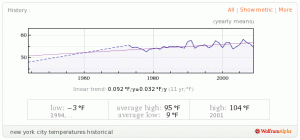I do not identify much with the Kristols, either father or son; their blowhard brand of elitist neocon bullshit has never sat well, and their cheerleading for the war-mongering, anti-Constitutional presidency of George W. Bush only sealed their fate. (See my piece “Kristolize That Thought” as one sample.) In that context, it was particularly apropos (and amusing) to find this quote from Irving Kristol kicking off part three of Barry Eisler’s new book, “Inside Out”:
“‘There are different kinds of truths for different kinds of people,’ he [Kristol] says in an interview. ‘There are truths appropriate for children; truths that are appropriate for students; truths that are appropriate for educated adults; and truths that are appropriate for highly educated adults, and the notion that there should be one set of truths available to everyone is a modern democratic fallacy. It doesn’t work.’”
The quote comes from a 1997 Reason Magazine story about the renewed rejection of Darwin and various justifications (excuses, really) for the “intelligent design” movement, for which the senior Kristol is also an apologist. But it is just as appropriate in this spot in Eisler’s novel—a book about the intellectual corruption of our government, its terrifying commitment to torture, the degree to which most of the American citizenry are complicit, and the importance (implicitly) of independent journalism—as it was in its original context. (It’s on page 237.)
I have been reading Eisler’s novels for a few years, and writing about them periodically (here and there) as well. Like many authors in the thriller / espionage genre, he brings a particular political and worldview to his stories, though this aspect of his fiction has grown stronger since he branched out from writing about the assassin John Rain to the covert operative Ben Treven. Treven was introduced in the novel “Fault Line,” which was entertaining and useful for establishing a new set of characters, but less sharp and well-defined than the Rain series. “Inside Out” has Eisler coming back strongly, and picks up where “Fault Line” left off: exploring the political undercurrent and motivations, not to mention the pervasive distrust, that is so sadly central to our country’s failings over the last decade. The premise of the new book (about a hunt for secret torture tapes) only serves to underscore the point.
It is also why the Kristol quote fits in so perfectly and disturbingly well: because in order for our government and our political parties to sustain such levels of dishonesty, there must be an internal rational—and Kristol has clearly framed it. Whether we are talking about George W. Bush, or Barack Obama, or Bill Clinton, or George H.W. Bush, or Nancy Pelosi, or John Boehner, or Henry Waxman, or Jeff Sessions, or Arlen Specter, or Sarah Palin, or…whoever you can think of in positions of power and “leadership,” this seems rather clear. Our country increasingly survives by drawing different levels of distinctions around the truths that citizens are allowed to know and understand. Even among the conservative (faux-)anti-elites, it functions as a clear form of elitism.
This is also why there is little significant discussion about the meaninglessness of healthcare reform (aside from misleading partisan talking points) or Social Security (ditto). It’s why we channel people through low-level state college systems that pretend to educate in ways that matter, but ultimately create false expectations for intellectual quality and credibility—instead of training people for jobs that serve our society and our lives. It is why President Obama can campaign on the idea of closing down the illegal prison at Guantanamo Bay, and claim in his December 2009 Nobel Peace Prize acceptance speech to have ordered the prison closed, and yet the prison remains open and the issues surrounding it largely unresolved. (If anything, the issues are now more fraught, as the Obama administration has picked up the mantle of executive supremacy and pushed back on what had been a growing sense that the prisoners there have rights under the U.S. Constitution and international law.)
“Inside Out” is a good, brisk, engaging read, with the usual bits that make such thrillers compelling. It surpasses many of its peers because of Eisler’s insights, and his ability to interweave these different issues—realtime issues, not just fictions—into the story. That he credits so many different journalists and critics at the end, has dedicated some appearances as fundraisers for independent journalism outlets, and includes a list of actual sources and stories, makes it even stronger. If you like these kinds of thrillers, you will certainly enjoy this book. If you are politically engaged, you can’t help but enjoy it and find it very disturbing, too.




